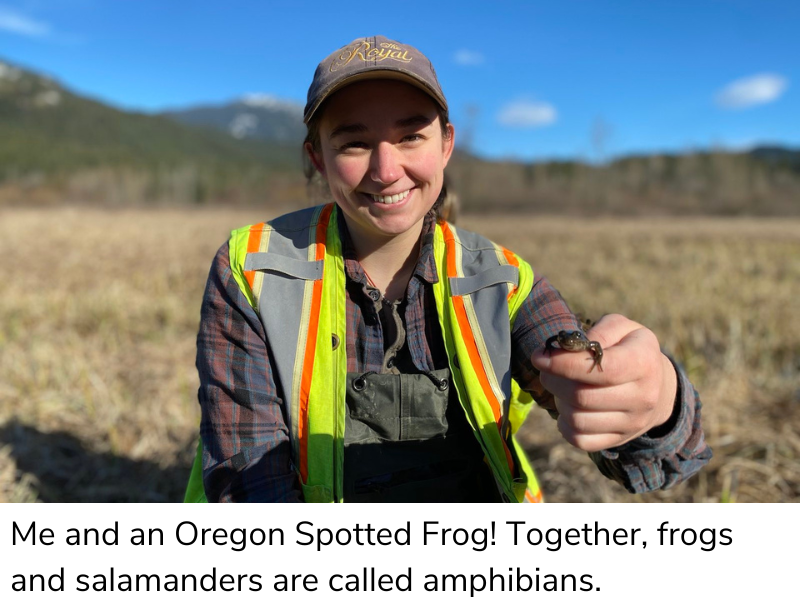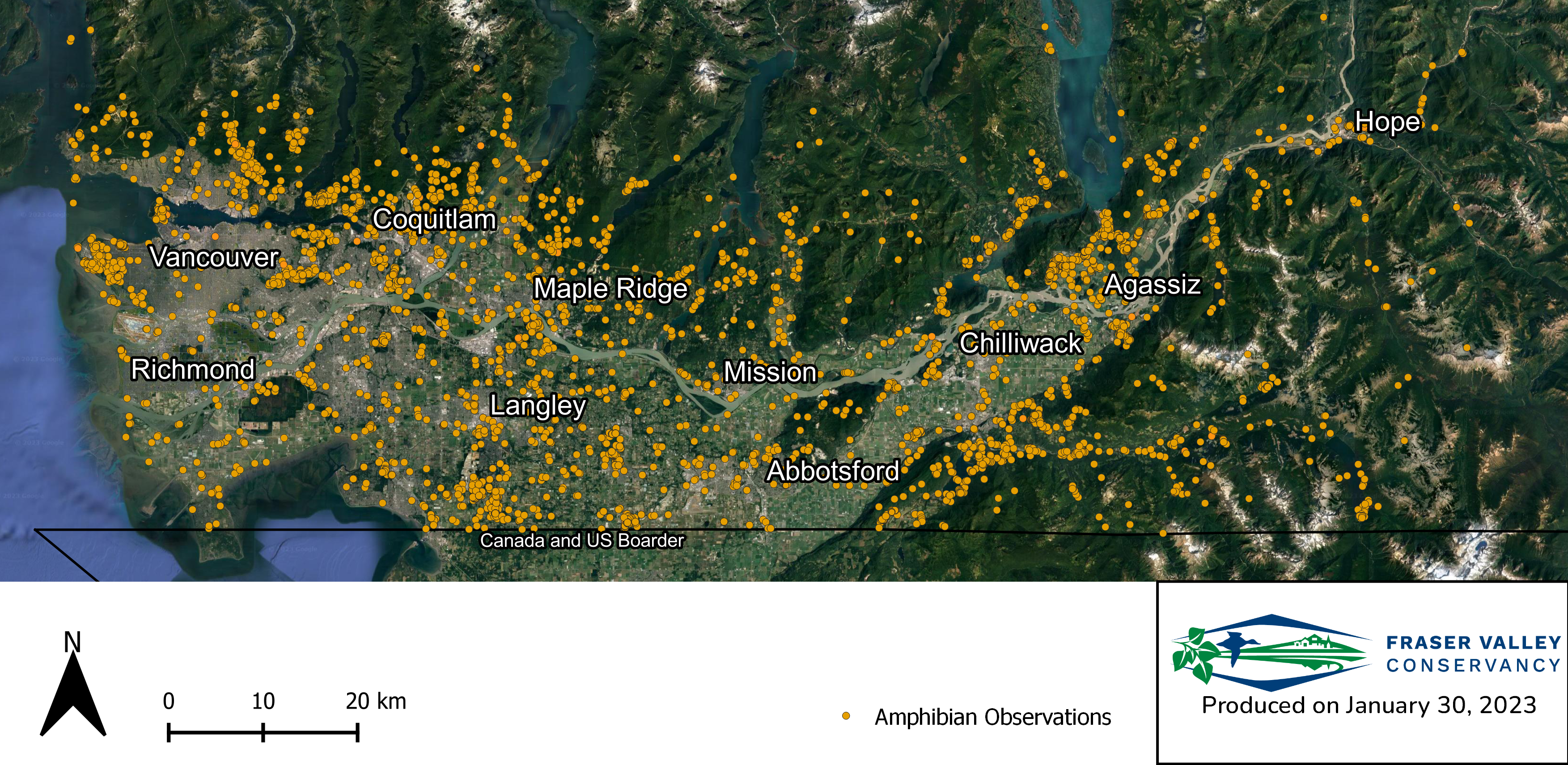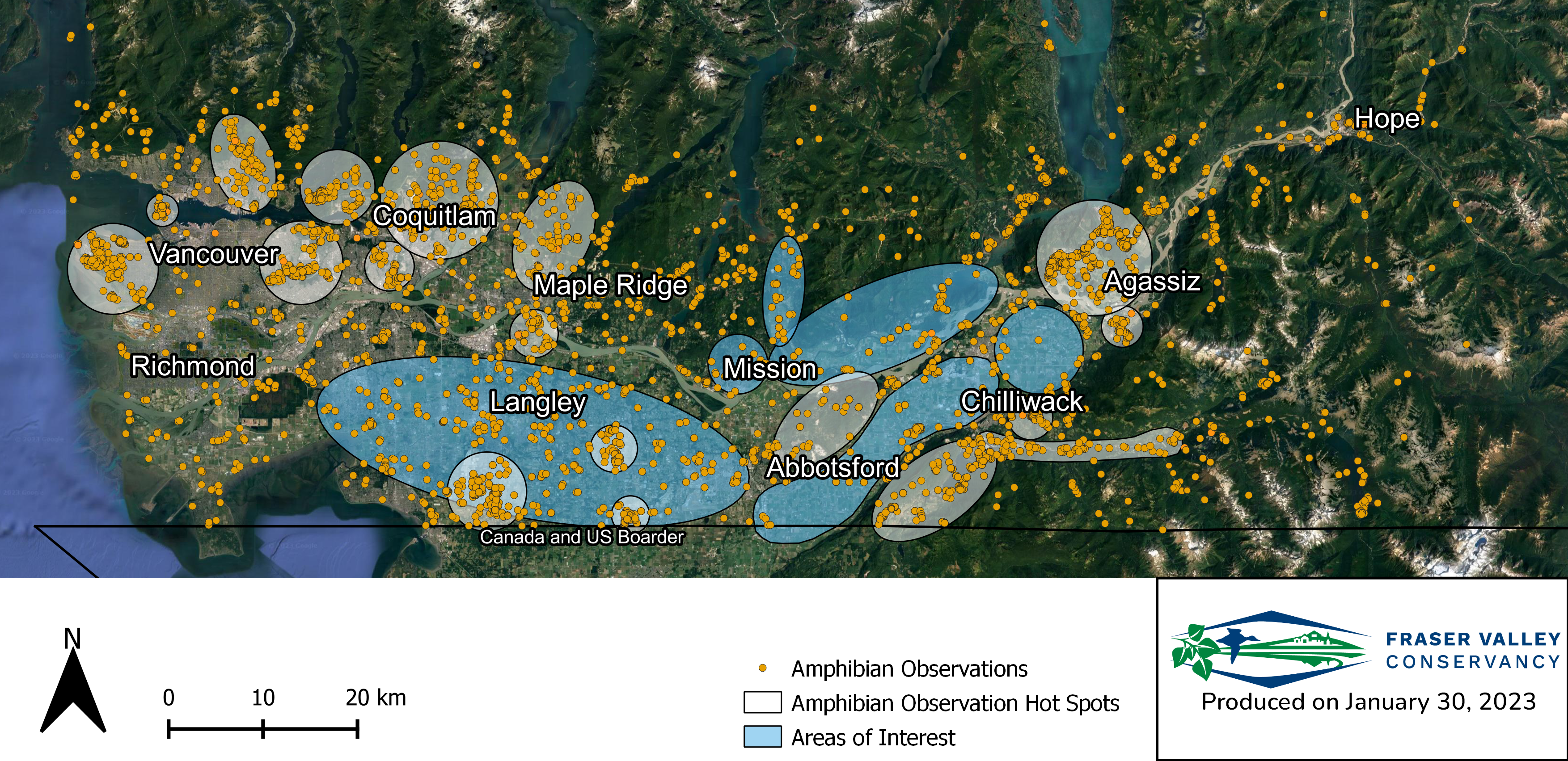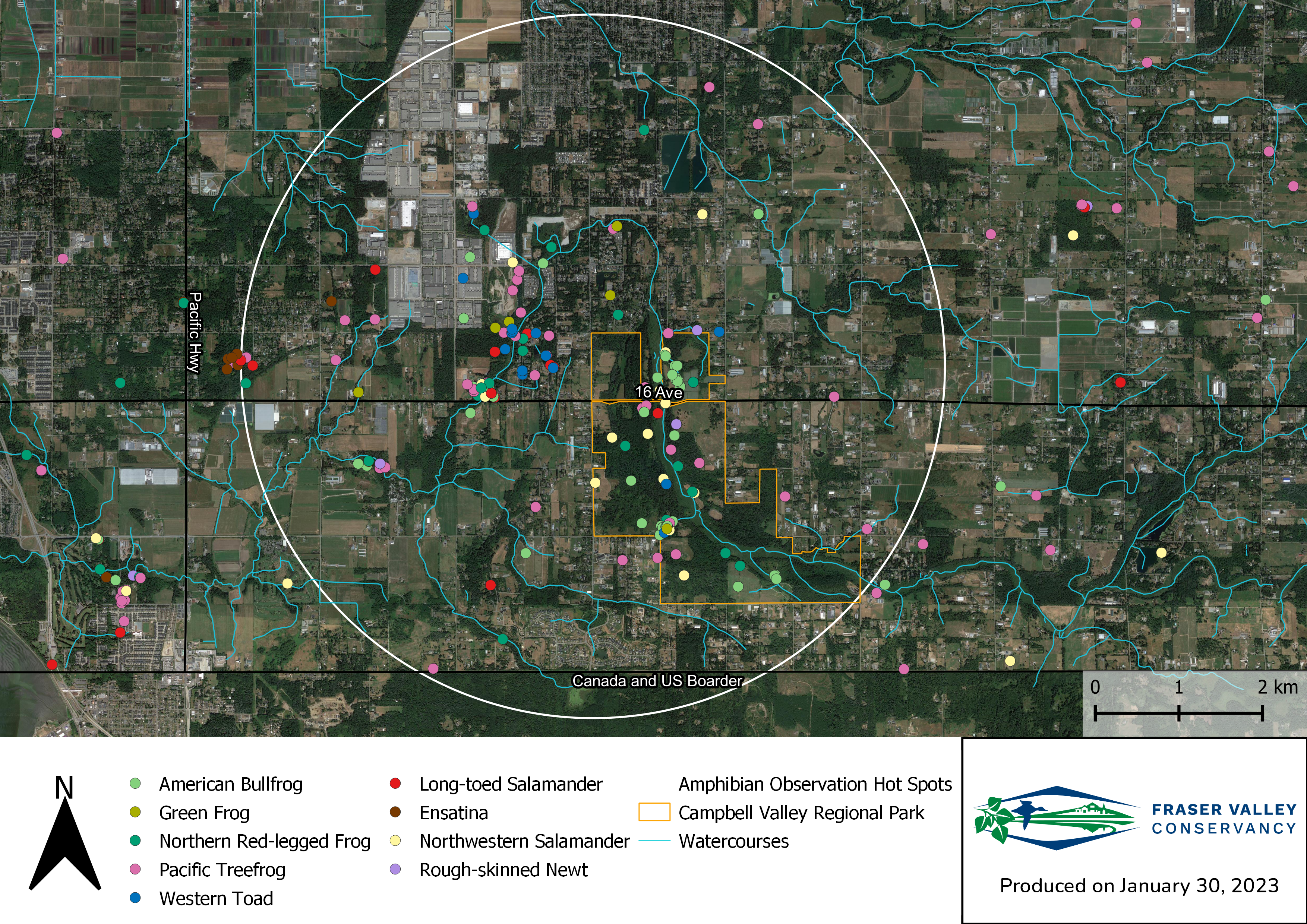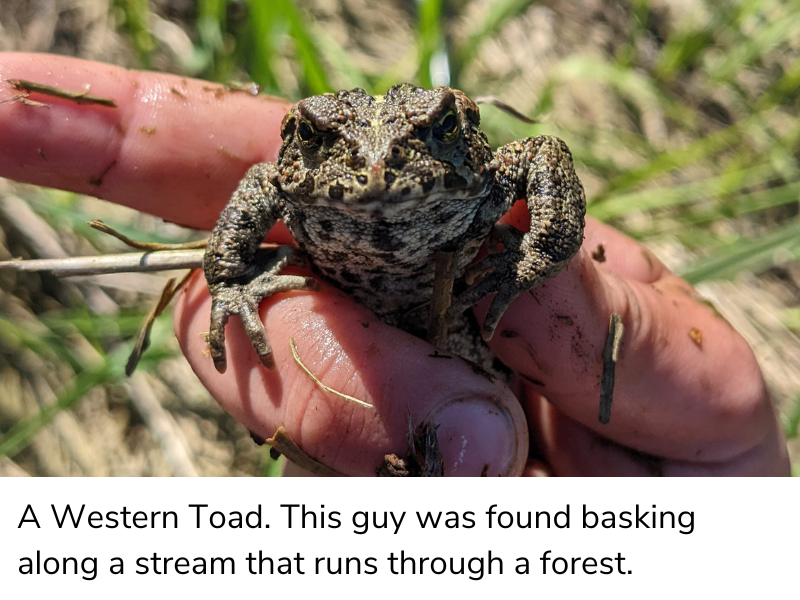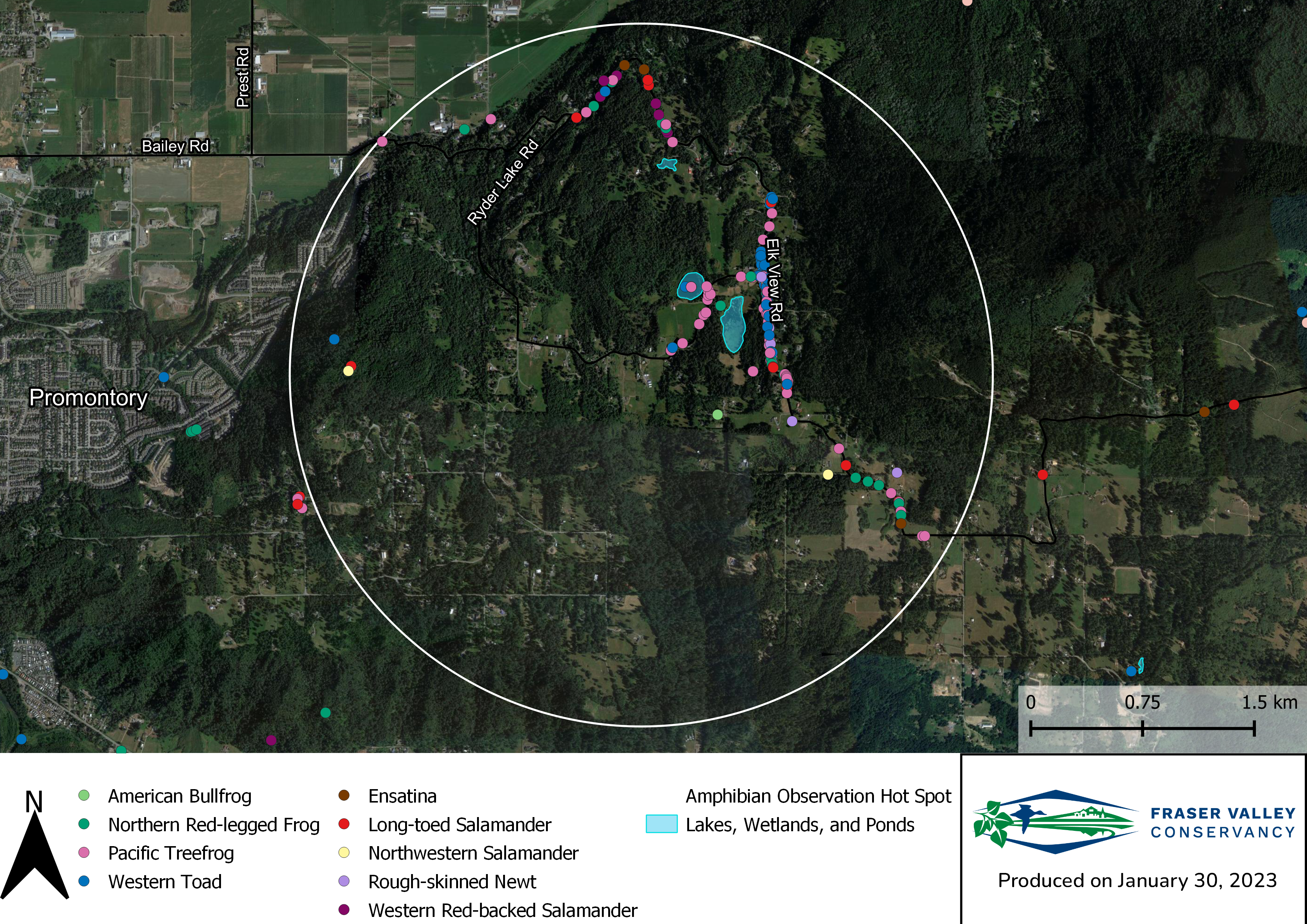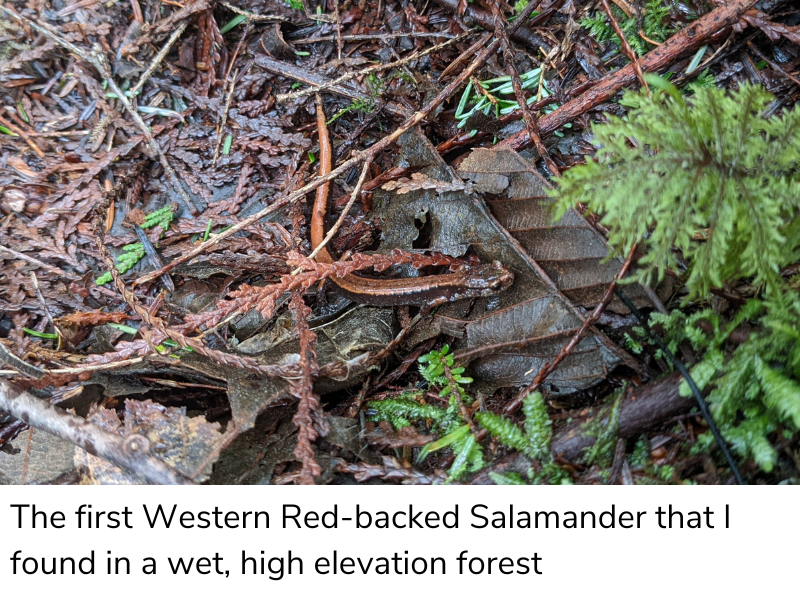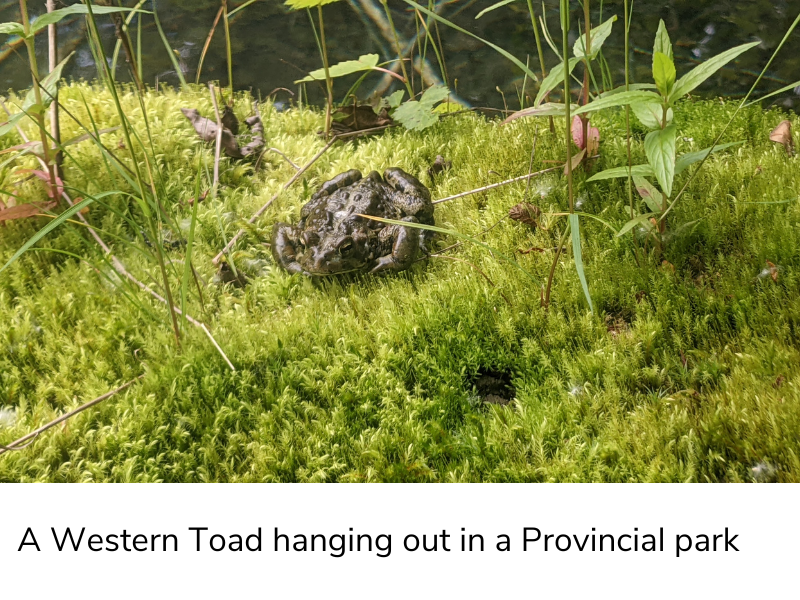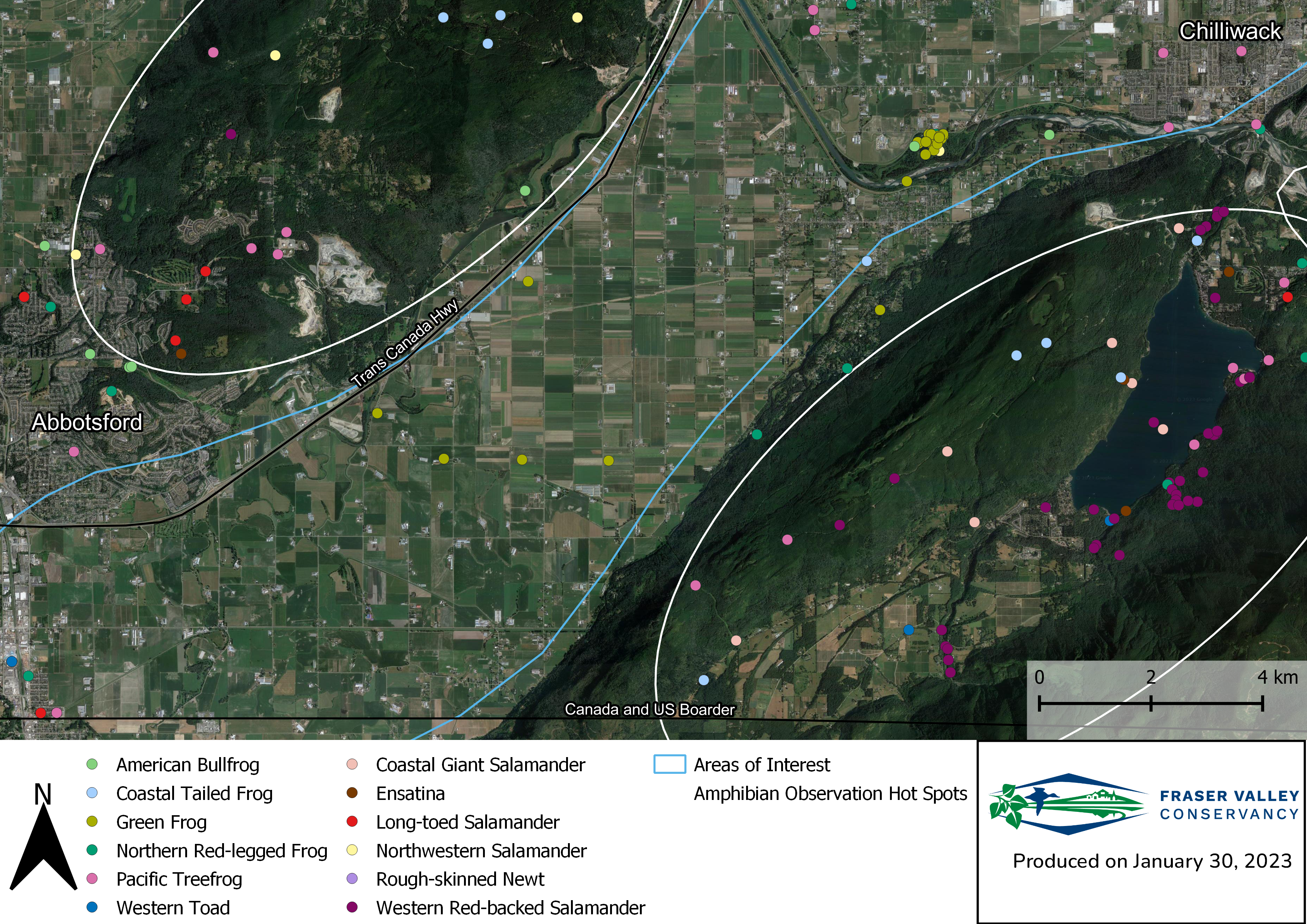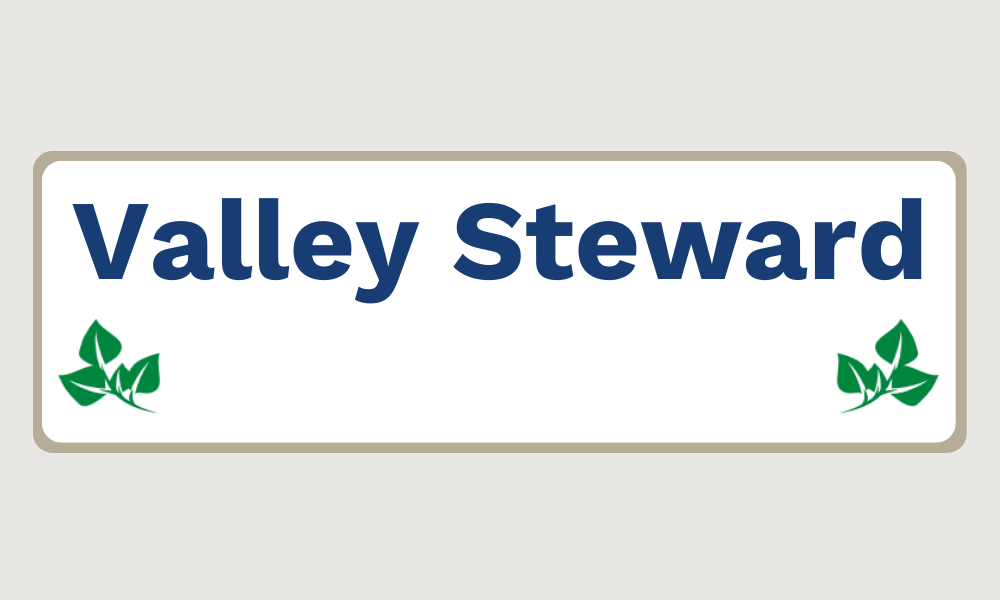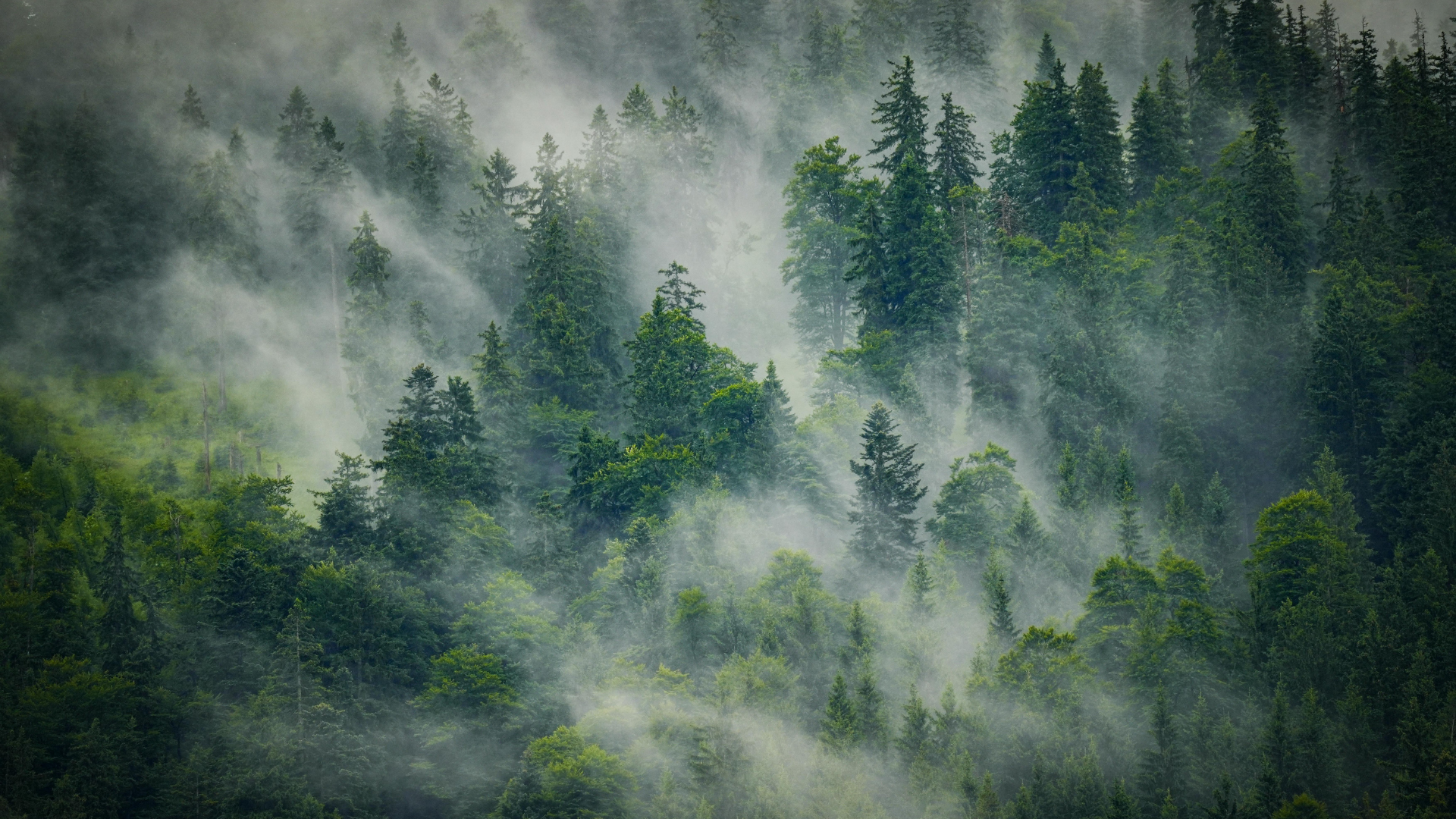Hi, I’m Joelle, a junior biologist working for the Fraser Valley Conservancy (FVC). I’ve been working on an exciting project that I want to share with you and show you how you can make a difference! I’ve been putting together a map of all the amphibian (frogs and salamanders) observations that we have. I was surprised to find out that so much of this data was collected by citizen scientists, who submitted their photos or videos to programs like iNaturalist or FVC’s Frog Finders program. Thousands of the points on my map started as photos, videos, and audio clips that were submitted to these programs by people like you!
Here at the FVC we focus a lot of our efforts on amphibians. We do annual surveys in the spring, searching wetlands for frogs and salamanders. We also make efforts to protect and enhance their habitat. But before any of these activities can happen, we need to know where they are. That’s where all these amphibian observations come in. All this data helps to direct the work of biologists. I didn’t realize until looking through all the data how much of an impact a single photo can have. Let me show you how your photos can make a difference using the maps that I made!
